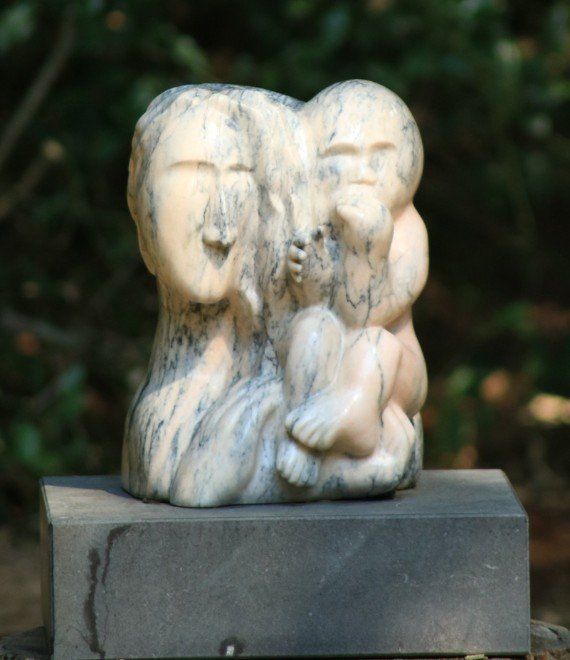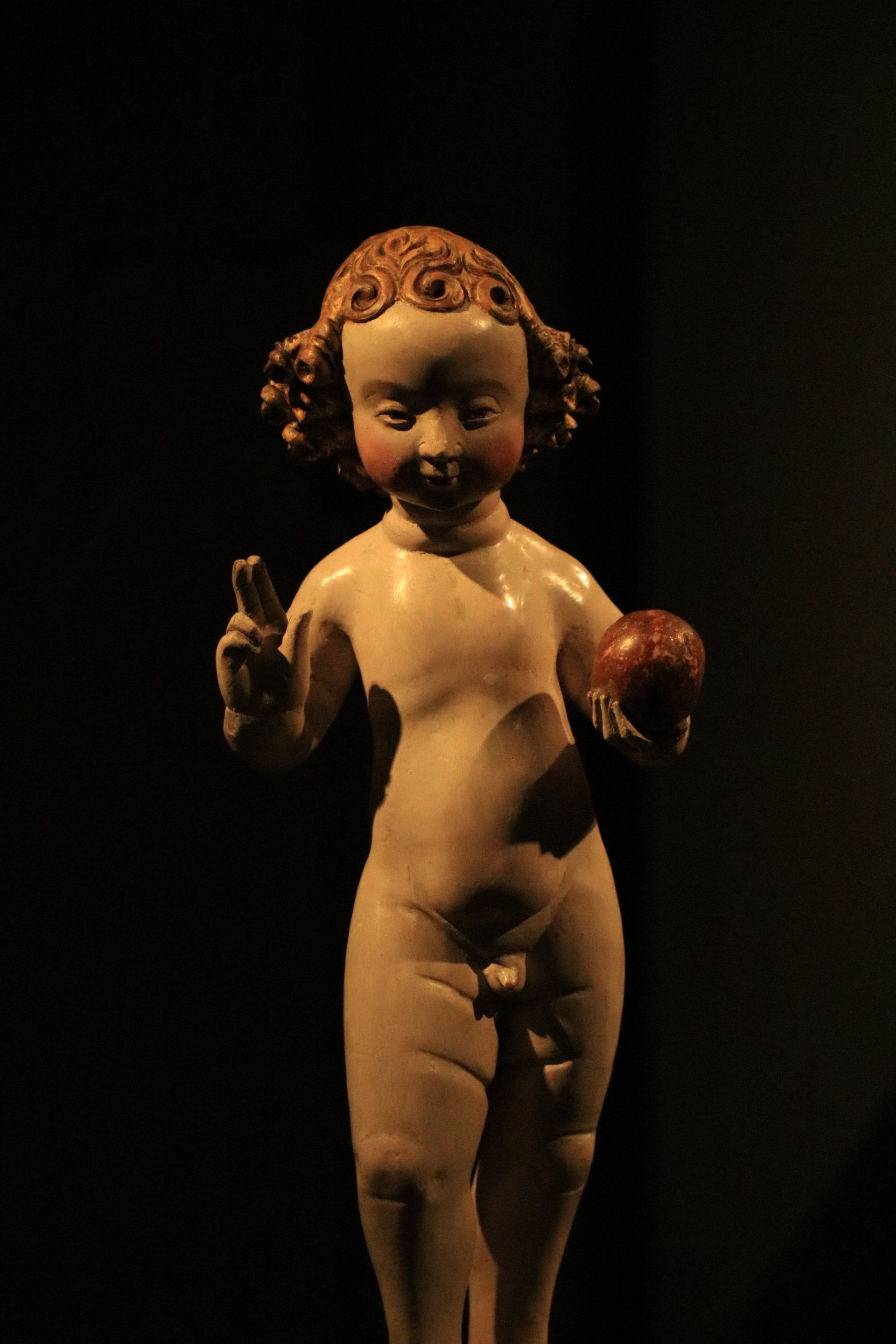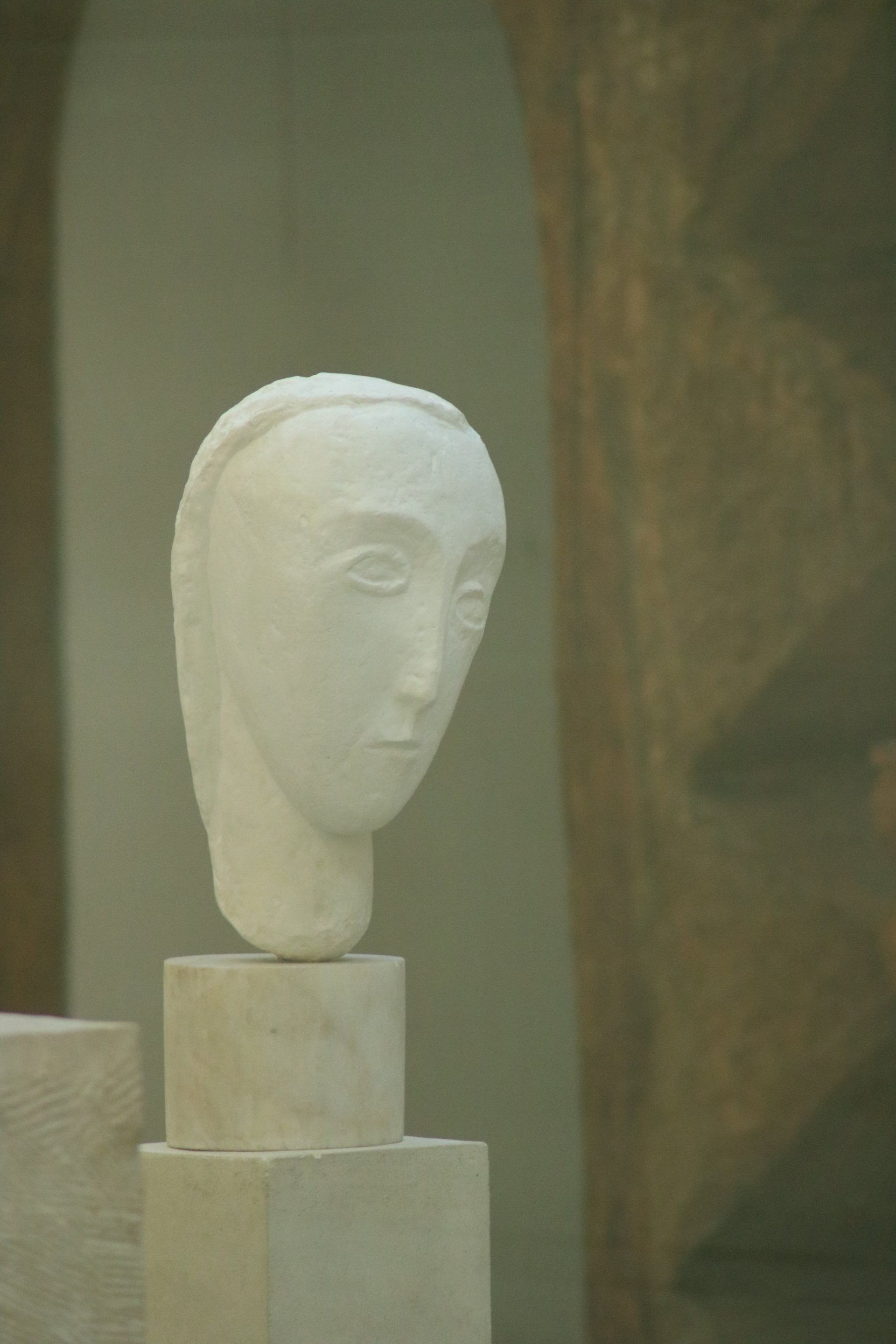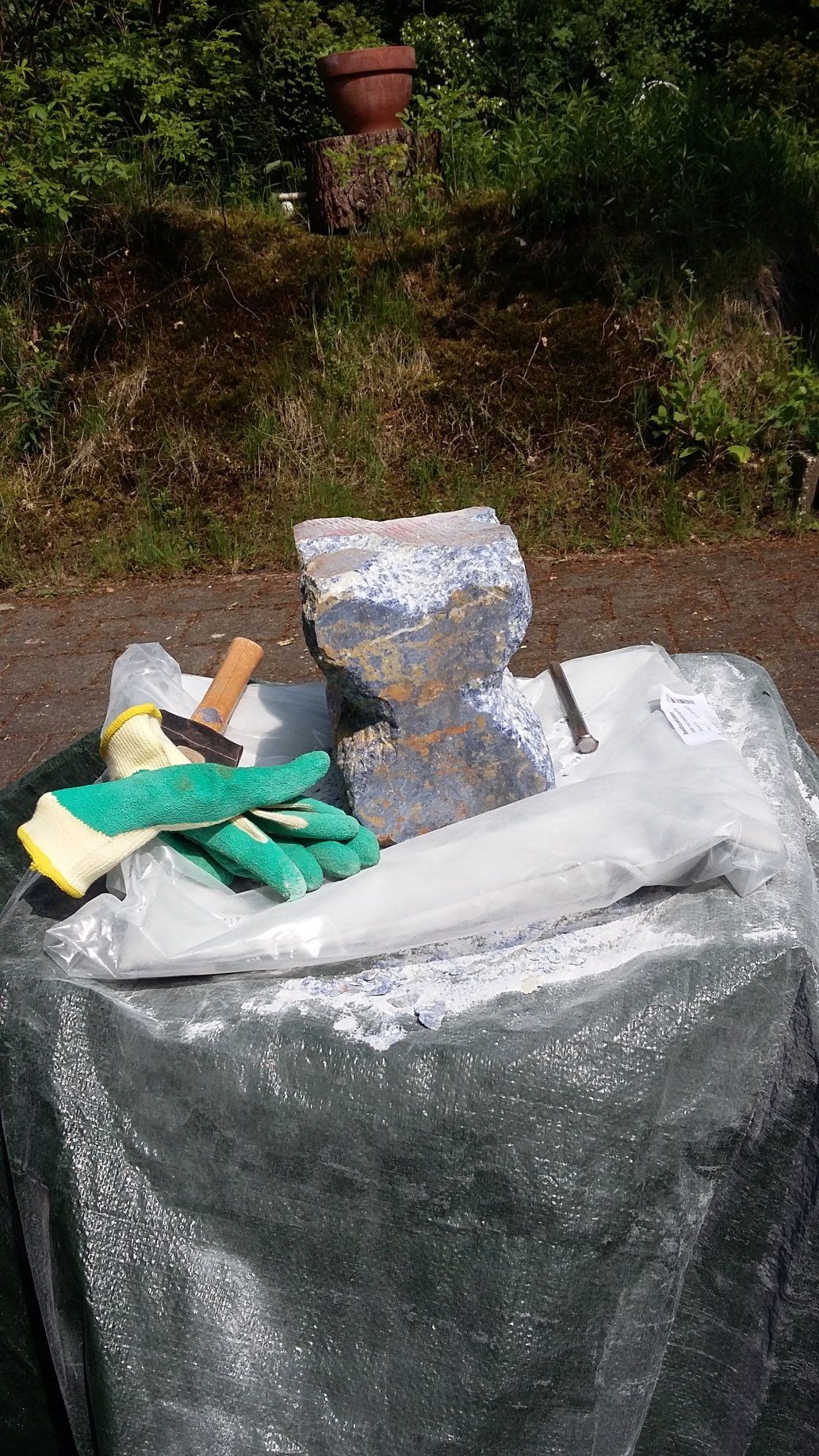MARBLE
My favourite material: the stone inspires the shape
Marble is my favourite stone type, maybe my favourite sculpture material in general. It is very heavy work, but the stone brings inspiration by its natural shape, other than bronze and willow sculptures. I prefer to sculpture by hand because I like to feel the marble more closely in my hands. It is a very calm, focused activity.
I think the radiation of marble sculptures and the tension they generate in space is absolutely stunning. Besides having an initial idea, the ultimate shape in marble is influenced and inspired by the natural stone structure, its strength and veins. Some parts of the stone are naturally soft where other areas are almost inpenetrably hard. That can pose a significant challenge as the stone can suddenly break. Feeling the strength differences requires intuition. Another issue is the structure of the colour veins. The ultimate challenge is to get the natural veins to accentuate the art shape. It is not always possible to predict from the outside how the veins in the inside will turn out. I succeeded suprisingly well on multiple occasions.
Sculpturing marble takes a lot of patience: it is a matter of months, years. The stone is hard and needs concentration to the very end and to the very last detail. I have experience in different marble types. The strength consistency is different for red, black, rosa portogallo, royal blue or white marble.
The gallery
provides an overview of the marble statues. The most prominent statues are also highlighted in more depth: Mother child bond, the Elephant with Mask, Butterflies
and the Kicking Trojan Horse. The making of shows an example of how a statue is sculptured from the beginning and is inspired by the original piece of marble.
GALLERY
The gallery shows my main marble sculptures. I experimented with different marble types, from rosa portogallo, to blue and black marble. Each marble type has unique strenght properties. The intellectual inspiration is different for each statue.
STATUES - MORE IN DEPTH
I describe some of the statues in the gallery in more depth below.
Mother child bond
Babies are often portrayed without much character in statues and paintings. That is unfortunate as the character of a baby is at its most original and least formed by education compared to a grown-up. Yet on the outside babies all look alike, even though the mutual affection with the mother is unique.
In the original Rosa Portogallo marble block I recognised what looked like the echo of an embryo on the outside. That was the inspiration for a mother child bond, with the mutual affection as a main theme. The mother is shaped with an elegant long neck similar to Modigliani figures. It is important to use the right proportions or the figure looks deformed. I visited a Brancusi, Rosso and Man Ray exhibition where Brancusi especially took my interest. I was already planning an abstraction of a facial expression, but was also inspired by Brancusi's minimal shapes that say everything there is to say. The facial shape and the curves to form the eyes are enough to imply a full facial expression. The child is curiously reaching out to the world from the safety of the mother.
Below my own statue two series of pictures are shown. Babies in more classical shapes often appear as cupidos or in Madonna configurations. I think they tend to show little affection alone or in combinations. In medieval shapes the baby is often practically an older man or an adolescent, which has to do with the reference to Jesus' wisdom. The subject is in fact a lot of fun.
The second series consists mainly of Brancusi statues. Clear is how an abstraction implies a facial impression. The last slightly darker picture is an ancient statue which is reminiscent of Brancusi's abstraction.
Elephant behind Venetian mask
The overarching theme is evolution. Human kind developed from animals, symbolised by the elephant in natural stone, into its current civilisation, symbolised by the more sophisticated bronze Venetian mask. In other words, we are animals behind a mask of civilisation. The bronze mask is a butterfly as a symbol for love as the basis for evolution. The butterfly seems to land on the elephant's nose. The elephant is sympathetic and cannot hide behind the mask at all.
The Rosa Portogallo marble elephant seems to be a simple statue, but it is far from that. It was my first serious sculpture in marble. The trunk swings aside characteristic to an elephant. During the sculpturing it was very difficult to steady the statue as it is heavy and has many curves. I needed to reach every side as well as the bottom. The final polishing needs to avoid scratching the parts that have already been finished.
Some of the veins in this statue clearly accentuate the head and the trunk, that is not visible on the picture. Such accentuation can hardly be planned in advance. The left side is very, very hard, where the right side is relatively soft compared to the right. The left side could curiously only be chiseled from the bottom upward.

Butterflies
The butterflies are swirling through the sky. The blue and white stone depicts the sky. The wings in stone represent the motion in the butterflies. Blue royal marble is in its hardness almost comparable to granite.
I studied the motion of birds and butterflies to capture the motion of wings. It took a long time to carve out the details. The difficulty is that the most fragile point is in the middle, which implies that a lot of stone needs to be removed from the middle on all sides. The pressure exerted to achieve that requires caution for breaking.
The stone in the picture still needs to be polished.

Kicking Trojan horse
The kicking Trojan horse symbolises my struggle with the refugee crisis and the terrorist strikes in Europe. In my opinion the refugee crisis is a Trojan horse that puts up people against each other in society, and as a result splits democracy. It is almost a strategic provocation in its own right. The terrorist strikes and the refugee crisis cannot be seen separate from each other. If only because the migration issue made the already present migrant population bolder and people started to chastise each other for racism. That is something that is only reluctantly publicly acknowledged by the government at the expense of victims, especially western women. It sometimes seems almost a shame to express these thoughts.
To which extent are then our moral values our true guidelines when humanist migration considerations lead to outright oppression here? Now it seems more acceptable to hold these views, but that took years. I hold that view since before 2012, the root of the problem are the trials and tribulations in the Middle East and the shape of Western interference. Withdrawing the army too soon brings terrorism here, prolongs the war there, and makes civilians in Europe into victims, or soldiers. Migration is brought as a positive influence or a humanist obligation. But in this context that mainly muddles the issue, it is about a war fought here and / or there. The statue expresses my frustration, the refugee crisis is a Trojan horse, a conceiled oppression. That is my opinion, my art.

THE MAKING OF
The sequence of pictures below demonstrates how the butterflies in blue royal marble took shape. To familiarise myself with the material I made the blue hand also shown on this site as a preparation. Blue royal marble is almost as hard as blue granite, that is clearly visible in the granular structure, but it is also feels harder to the touch. In practice the marble can break quite unexpectedly brittle and it is hard to carve out details.
The shape of the butterflies in this light is very difficult. The smallest connection between the two butterflies is situated in the middle of the stone and is very vulnerable to breaking. Large parts need to be carved out to get to the middle. The wings are very detailed and fragile as well and take a lot patience. The process progresses fairly quickly in the first round with a chisel to roughly shape the figure. The next rounds take more time as the process becomes more and more refined, carving out details, ending with several polishing rounds.


















